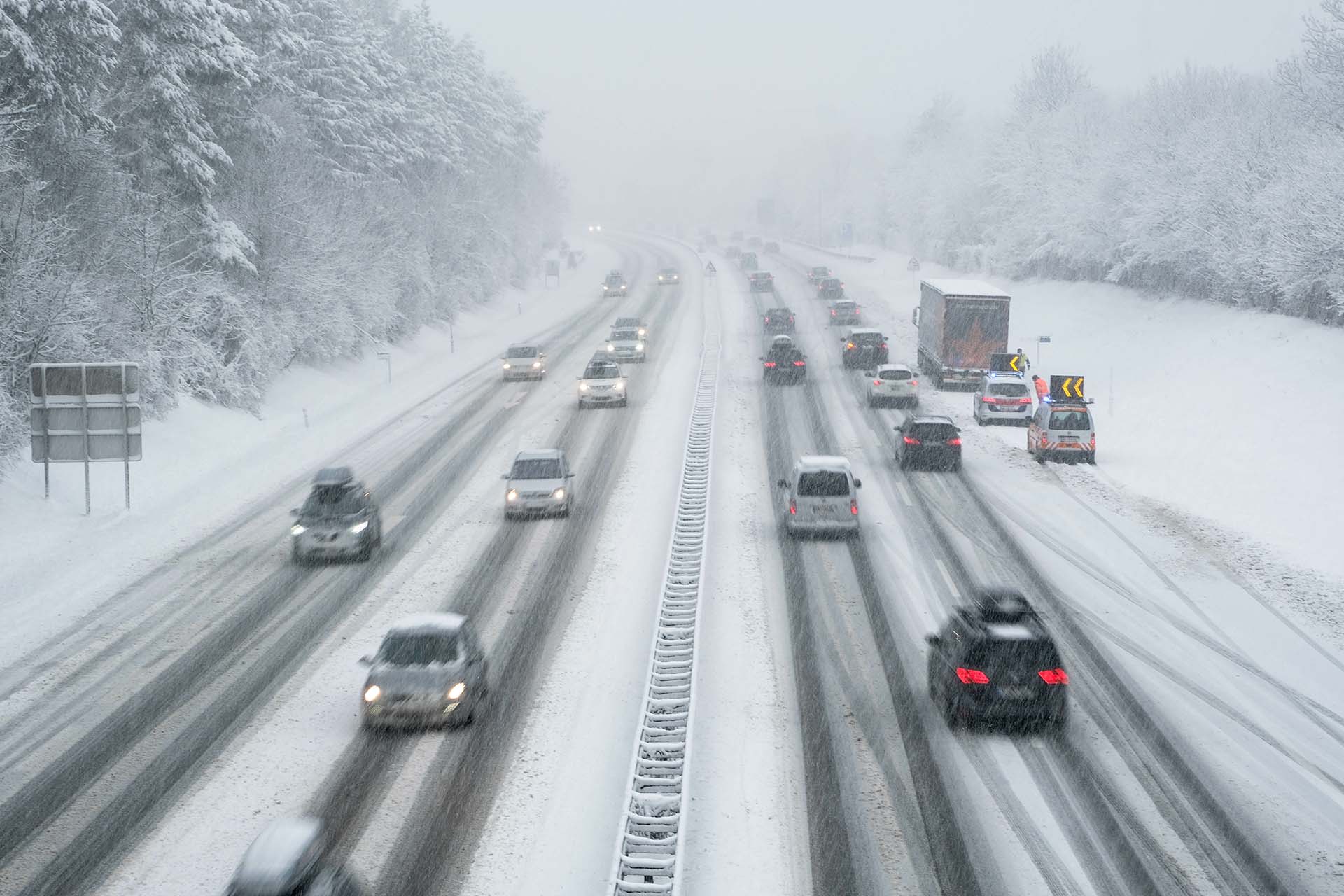Every year, over 1,800 traffic fatalities occur due to icy roadways, and more than 135,000 suffer severe personal injuries for the same reason. The number one rule of safe driving in the winter is to take it slow – but sometimes, slow and steady isn’t an option. What do you do when you’re on the highway and can’t safely go at the pace you’re comfortable with? Believe it or not, we have tips for that too. Here’s what you need to know.
Before You Hit the Road
Prepping your vehicle for icy conditions can prevent a roadway disaster. Before taking a trip, especially with long stretches of highway, use a checklist to make sure your car is as safe as possible and avoid a car crash.
- Keep your vehicle inspection up to date.
- It can take vehicles up to ten times longer to stop when driving on snowy roads which can cause a collision. Invest in snow tires to give your car more traction.
- Keep a roadside emergency kit in your vehicle.
- Take a look at the day’s weather and traffic.
- Check that your lights and windshield wipers are functioning properly.
- Fill up on gas. The highway is no place to break down.
- Check your fluids and top them off if necessary.
- Keep an eye on your tire pressure to avoid a blowout.
While Behind the Wheel
Practicing safe driving isn’t a seasonal habit, however, there are certain habits specific to icy conditions. When on the highway in cold weather, follow these safe driving tips for a worry-free excursion.
- When the road is slick, it takes longer for your vehicle to stop or slow down in an emergency. This is especially true on the highway where speed limits are higher. Make sure you keep a following distance of at least three car lengths, or more if you’re operating a larger vehicle.
- Use defensive driving.
- Keep an eye out for black ice. It can be difficult to spot, but not impossible. Black ice can be recognized as darker parts of the road, sections that look wet, and is often found on bridges and overpasses.
- When merging or changing lanes, signal a little bit earlier and longer than you usually would to give everyone around you extra warning.
- Avoid driving in other drivers’ blind spots- especially semi-trucks.
- Keep your speed consistent with the flow of traffic as much as possible.
- Avoid changing lanes unnecessarily.
- Stay out of the passing lane if you are not passing anyone. With that said, don’t weave between slower cars in winter conditions unless absolutely necessary.
- Avoid cruise control in the winter, and stay alert if you use it.
- Give extra room to vehicles pulled over on the shoulder.
Highway Accidents
Sometimes, no matter how safe a driver you are, car accidents happen. If you get into a car wreck on the highway, make sure you know what to do. Keep calm, and follow these five simple steps.
- Check yourself and your passengers for injuries.
- If possible to do so safely, move your vehicle to the shoulder and turn on your hazard lights.
- Call 911.
- Collect important information such as:
- Police reports and officer names or badge numbers.
- Photos of the accident, damages, and your injuries.
- Contact information from any witnesses.
- The other driver’s information, including their insurance information.
- Contact a personal injury attorney before talking to any insurance company to avoid your words being used against you.
Your attorney will help you through the compensation process and ensure that you get the settlement you need to cover your expenses by handling the following.
- Communications with insurers.
- The correct and timely completion of legal paperwork.
- Gathering evidence.
- Negotiations with the party at fault.
- Calculating the value of your personal injury.
For free legal advice from a St. Louis lawyer near you, contact us today to schedule your free legal consultation. Choose a personal injury attorney that will fight for your rights, and the compensation you deserve.

